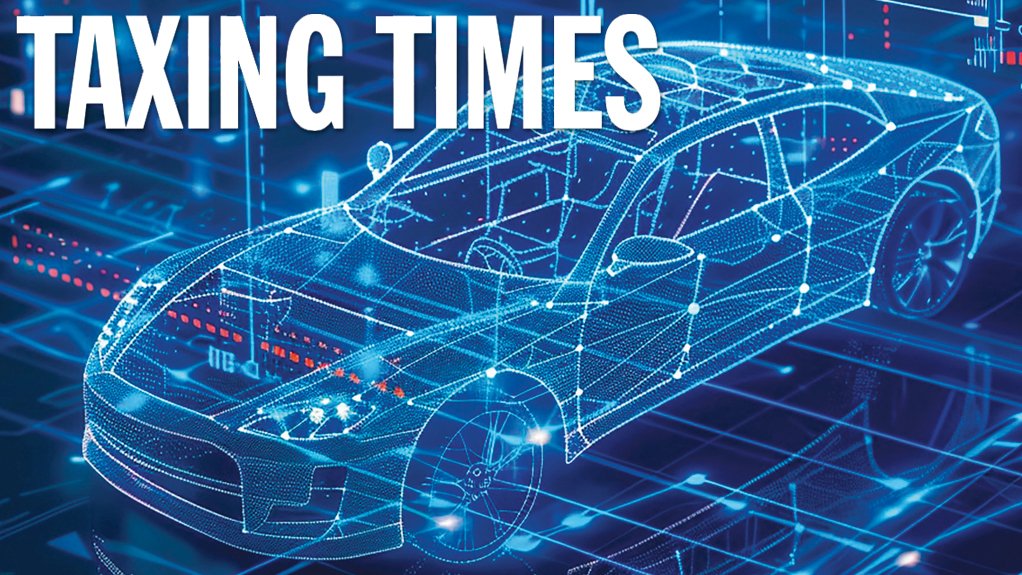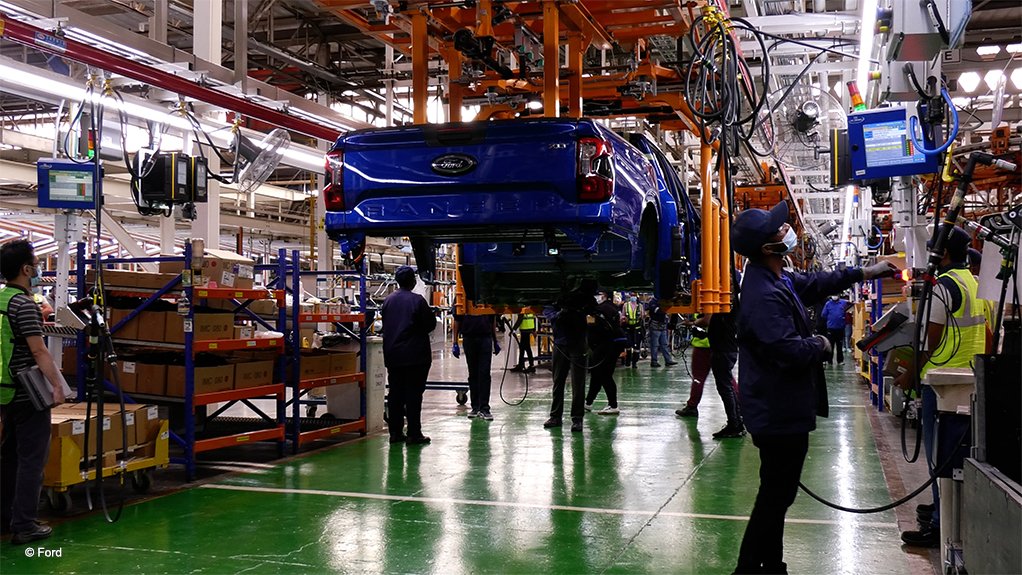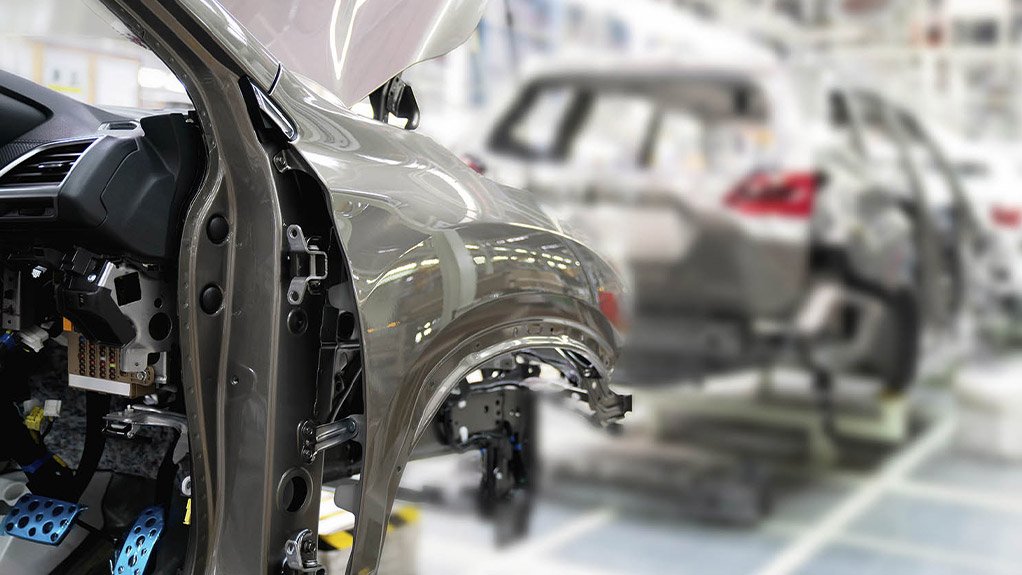SA’s automotive prospects clouded by high taxes and exports risks




OVERTAXED The automotive industry is excessively taxed in the market and stimulating demand through tax relief could increase production and overall demand
REALITY CHECK Vehicle manufacturing levels in South Africa have not achieved the ambitious goals set in the South African Automotive Master Plan 2021-2035
The importance of export growth as an automotive industry strategy is crucial to mitigate the numerous risks associated with South Africa's low growth environment.
"We see export growth as a really key strategy to somewhat derisk the South African industry from a low growth environment . . . and really capitalise on opportunities," National Association of Automotive Component Allied Manufacturers policy and regulatory affairs head Beth Dealtry said during a recent expert webinar panel hosted by Creamer Media.
The virtual event, titled SA's Automotive Industry 2024: Navigating Global and Domestic Risks While Embracing New Opportunities, featured other speakers such as Toyota Wessel Institute for Manufacturing Studies manufacturing ambassador Professor Justin Barnes, Metair Investments CEO Paul O’Flaherty and EY partner Duane Newman.
Dealtry discussed the impact of the European Green Deal from an export perspective, emphasising the need to consider and act on multiple elements.
She noted that South Africa's export basket was highly concentrated, with more than 40% of exports channelled to Europe.
While exporting to the rest of Africa presents fewer regulatory challenges, the stringent environmental regulations in Europe and the US pose risks.
For example, catalytic converters comprise more than 40% of exports, but demand is declining because of the transition to battery electric vehicles (BEVs). This concentration of exports creates significant risks in market and component supply.
"I think we are quite vulnerable because of our exposure to Europe,” O’Flaherty said, adding that 82% of the value generated in the South African auto assembly industry stems from exports, with 70% of those exports destined for the broader European market, including the European Union, the European Free Trade Area, and the UK.
He noted, however, that these regions had increasingly stringent emissions controls and announced bans on internal combustion engine (ICE) vehicles, which he believes are premature.
State of Local Market
Barnes pointed out that the South African automotive industry employed about 115 000 people in manufacturing, with about 30 000 in assembly and the remainder in auto components. Additional employment exists in dealerships and services, though these are not considered tradable sectors.
He said the industry was significant not only because of its size but also its high wages and salaries, making it a key contributor to the economy.
The manufacturing sector contributes about 3% to GDP, with another 3% from the services sector, making it the second-largest manufacturing sector after food and beverages.
However, despite its success – and remaining the most advanced automotive industry on the African continent – the automotive industry has faced growth limitations over the past decade, maintaining a relatively flat employment and GDP contribution.
Tax Concerns
Barnes highlighted the substantial issues of the South African vehicle consumption market, particularly those pertaining to the tax regime, which led consumers to opt for entry-point models over mid-market vehicles.
"We actually have a huge problem in South Africa in relation to how our market functions.”
Particular challenges with the uptake of new-energy vehicles (NEVs) by the local market are being exacerbated by the market structure and taxation by the National Treasury, with excessive taxation causing consumers to shift towards cheaper models.
"Our automotive policy is actually schizophrenic . . . the industry is actually excessively taxed in the market,” Barnes added.
He is critical of the ad valorem tax structure, unchanged since the mid-1990s, which imposes severe luxury taxes even on the cheapest cars, and cited calculations from 2018, which show that the South African government lost billions in potential tax revenue, owing to overtaxing vehicles, especially in lower tax bands.
"If you buy a family motor car . . . you're already getting a 30% luxury tax, and on top of that, the environmental levy and the tyre levy."
Barnes advocates for significant changes to the vehicle tax structure, urging the National Treasury to provide relief at duty level to make vehicles more affordable.
"I wish National Treasury would do the maths. I'm pretty confident that the situation's got a whole lot worse,” he said.
Barnes argues that stimulating demand through tax relief could increase production and overall market demand, while calling for a re-evaluation of the vehicle tax policies to alleviate the tax burden on mid-market vehicles. This would stimulate demand across the automotive sector and foster a more robust and equitable local vehicle market.
New-Energy Vehicles
Barnes also highlighted that the tax regime was exacerbating the high cost of NEVs, compared to that of ICE vehicles.
In South Africa, the punitive tax structure results in BEVs being 80% more expensive than their ICE equivalents, instead of just 50%.
"The challenge we've had [with NEVs] . . . in South Africa is that . . . government is fixated on trying to support NEVs from a production perspective, but obviously doesn't want to support market consumption,” Barnes noted.
As a result, South Africa has a very small BEV market, with no incentives for buying these vehicles, although developing economies – of which South Africa is one – cannot afford to incentivise much vehicle consumption. BEVs are also more expensive to insure, in addition to unresolved issues pertaining to the end-of-life consequences for BEV batteries.
"There are a whole range of complexities that need to be worked out. This is not going to stop the BEV transition . . . but it may just push it out by five to eight years," Barnes said.
Aside from a global decline in enthusiasm for BEVs, owing to market realities and life-cycle cost considerations, Barnes believes South Africa will struggle with the transition to BEVs because of its unique market structure, which needs to be corrected.
Dealtry, however, says there are opportunities in the aftermarket sector if South Africa could develop a wider export basket in the long term, citing that, for example, manufacturing is increasingly focusing on plug-in hybrids, rather than full NEVs.
She noted, however, that South African automotive industry suppliers were struggling to adapt to these changes.
In wire harnessing, for example, the increase in circuits for hybrids and electric vehicles demands more copper, raising supply chain questions.
Lighting businesses must consider the visibility and aesthetics specific to electric vehicles, while heat exchange products require significant adjustments to shift from combustion engines to electric or hybrid systems.
Plastic products must address the need to reduce weight – owing to the heavier nature of electric vehicles – to enhance efficiency, while suspension systems must be adapted to accommodate the different dynamics and weight of these vehicles.
Dealtry believes that advances in battery storage technology will be crucial to meet the demands of NEVs.
Manufacturing Growth Concerns
O'Flaherty noted that vehicle manufacturing levels in South Africa had not achieved the ambitious goals set in the South African Automotive Master Plan 2021-2035.
The plan aims to double yearly vehicle production from about 600 000 to 1.2-million by 2035. However, in 2023, production levels reached only about 650 000 vehicles, a modest increase from about 600 000 in 2015.
“If you look at this year . . . on a comparative basis, we are down again in 2024. So, if you extrapolate that forward, [we will] probably [make only] about 610 000 vehicles this year.”
O’Flaherty emphasised the difficulties in predicting future production levels, owing to ongoing challenges faced by original-equipment manufacturers, and global economic issues.
Despite this, Dealtry is optimistic about the future of the South African automotive industry, emphasising the importance of supportive policies to create a stable and increasingly localised vehicle and components manufacturing sector.
"We want stability. I think that's important from an investor confidence perspective. We have a good Automotive Production and Development Programme (APDP) that is supportive of the sector.”
However, she underscored the need to enhance localisation.
"I think localisation really is the one area that – if we were to go into tweaks with the APDP from a policy perspective – needs to be considered. We are falling behind the Master Plan targets quite significantly. [We achieved] about 39.5% local content in 2023, versus what we should have been on the trajectory perspective of about 46%.”
To boost localisation, Dealtry emphasised the necessity for South Africa to be globally competitive.
"We already . . . have world-class manufacturers within the sector, but [we] certainly [need] more competitiveness enhancing reforms. So, if we're talking about port efficiency, and obviously stopping loadshedding, those . . . infrastructure reforms would certainly help [to] really promote South Africa as an investment destination of choice, and encourage the growth in production and localisation,” she said.
Article Enquiry
Email Article
Save Article
Feedback
To advertise email advertising@creamermedia.co.za or click here
Comments
Press Office
Announcements
What's On
Subscribe to improve your user experience...
Option 1 (equivalent of R125 a month):
Receive a weekly copy of Creamer Media's Engineering News & Mining Weekly magazine
(print copy for those in South Africa and e-magazine for those outside of South Africa)
Receive daily email newsletters
Access to full search results
Access archive of magazine back copies
Access to Projects in Progress
Access to ONE Research Report of your choice in PDF format
Option 2 (equivalent of R375 a month):
All benefits from Option 1
PLUS
Access to Creamer Media's Research Channel Africa for ALL Research Reports, in PDF format, on various industrial and mining sectors
including Electricity; Water; Energy Transition; Hydrogen; Roads, Rail and Ports; Coal; Gold; Platinum; Battery Metals; etc.
Already a subscriber?
Forgotten your password?
Receive weekly copy of Creamer Media's Engineering News & Mining Weekly magazine (print copy for those in South Africa and e-magazine for those outside of South Africa)
➕
Recieve daily email newsletters
➕
Access to full search results
➕
Access archive of magazine back copies
➕
Access to Projects in Progress
➕
Access to ONE Research Report of your choice in PDF format
RESEARCH CHANNEL AFRICA
R4500 (equivalent of R375 a month)
SUBSCRIBEAll benefits from Option 1
➕
Access to Creamer Media's Research Channel Africa for ALL Research Reports on various industrial and mining sectors, in PDF format, including on:
Electricity
➕
Water
➕
Energy Transition
➕
Hydrogen
➕
Roads, Rail and Ports
➕
Coal
➕
Gold
➕
Platinum
➕
Battery Metals
➕
etc.
Receive all benefits from Option 1 or Option 2 delivered to numerous people at your company
➕
Multiple User names and Passwords for simultaneous log-ins
➕
Intranet integration access to all in your organisation

















